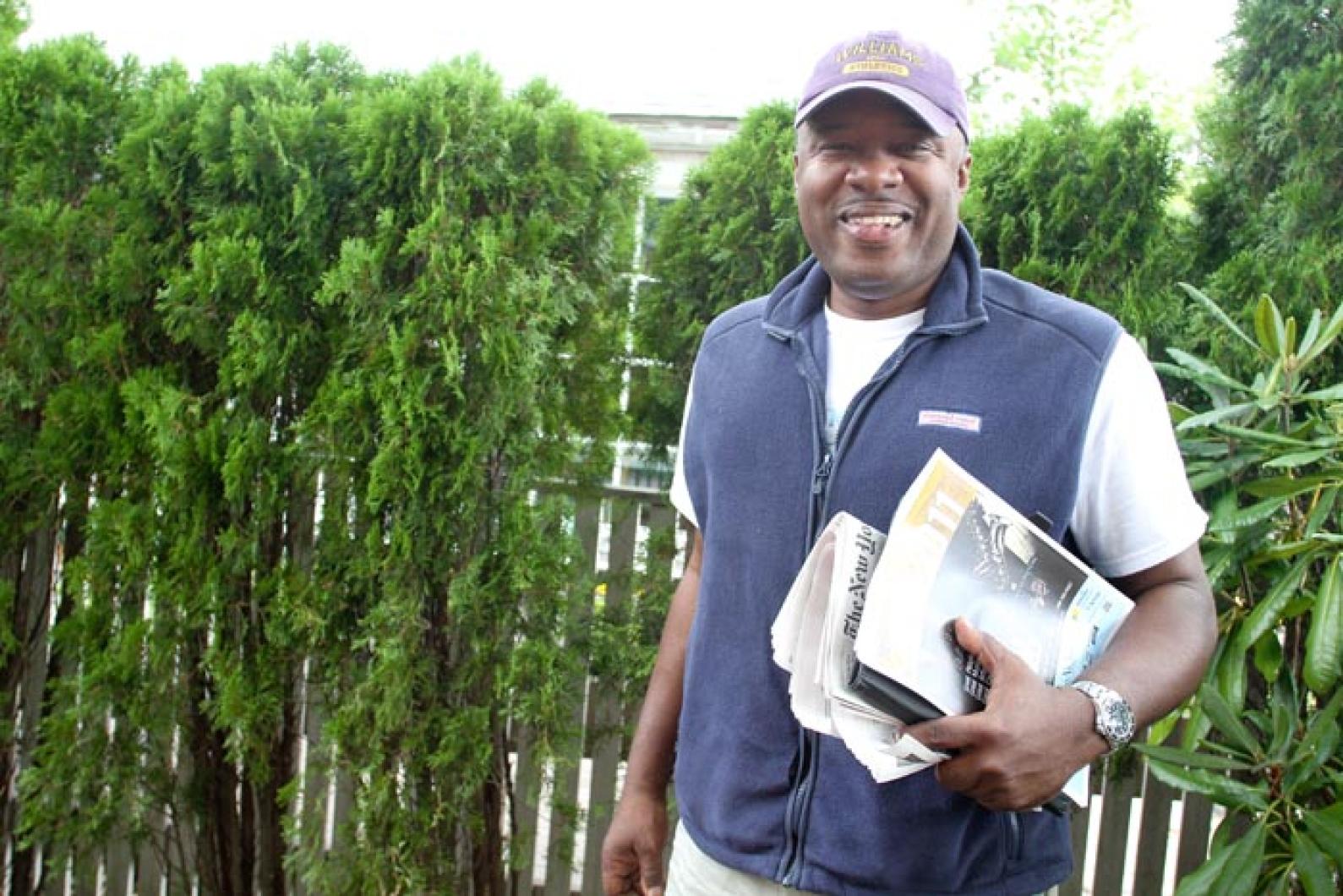Ken Alleyne doesn’t let rain get between him and jazz. Sitting on his beach chair, even when it meant simultaneously clutching his umbrella, Dr. Alleyne will take in the acts at the world famous Newport Jazz Festival, which goes on rain or shine. But as he and his wife began spending more of the summer on the Vineyard, he started missing the annual outdoor jazz event. So instead of tearing himself away from his home in Harthaven, Dr. Alleyne decided to bring jazz to Martha’s Vineyard.
Tonight the orthopedic surgeon debuts as festival producer of Jazz on the Vineyard.
With an opening reception tonight and performances by pianist Cyrus Chestnut’s trio, then Rachelle Ferrelle and Nicholas Payton on Saturday night at Featherstone, Jazz on the Vineyard promises to entertain but not only to entertain. Its aim is to raise money for a new program begun this year in Hartford, Conn., called Student Achievement Through Opportunity (SATO). Founded by members of the Waterbury, Conn., chapter of Sigma Pi Phi, a post-college fraternity of African American men founded in 1904, the SATO program aims to focus on middle school students who show promise and shepherd them through to college.
In a conversation with the Gazette on Tuesday, Dr. Alleyne spoke of the achievement gap in Hartford and of the significant extremes between wealth and poverty in Connecticut, a state usually thought of as exclusively wealthy. “Connecticut and particularly Hartford, amazingly, has the largest achievement gap in the United States,” he said, recognizing that Connecticut may not be the first place that comes to mind when the topic of achievement gaps comes up.
With this in mind, Dr. Alleyne and Sigma Pi Phi decided to do something for Hartford area students.
“I brought to them [his Sigma Pi Phi chapter] this concept, that part of what I think is happening with this achievement gap is an opportunity gap.
“We know that there are students who are really challenged at the lower academic end but there are so many resources, not necessarily well spent, but so many resources pointing towards those kids.
“But over the years I’ve had the opportunity to see that there are kids at the opposite end of the spectrum who are really talented academically [who are given] minimal resources and not as much of a focus,” said Dr. Alleyne.
The aim of the SATO program is to focus on students that Dr. Alleyne describes as the B-plus students who are talented enough to attend top colleges but don’t have opportunities to expand their horizons.
“The concept for Student Achievement Through Opportunity is to put together kind of a rich compendium of academic and cultural enrichment opportunities for these students,” he said. With the right set of opportunities, such as SAT prep and exposure to museums, symphonies and other cultural institutions, Dr. Alleyne believes that the students SATO identifies, who would be otherwise unlikely to go to college, can attend university with an eye towards returning to Hartford as educated young professionals.
The program, which is in its first year, is focused on Hartford, a once-thriving city that has declined. Dr. Alleyne points to a number of programs the city has tried, namely charter and magnet schools; he says that while those help, not everyone can attend schools with such limited space. Even independent schools that give out full scholarships can only do so much, and SATO hopes to help those students who have missed these other opportunities.
“We’ve already had requests from other areas [to expand the program],” Dr. Alleyne smiled.
“Our board, outside of maybe one or two individuals, are not educators. We’re just folks who want to be engaged in addressing this problem, but we’re not trying to be educators or want to pretend that we’re educators. Our goal is to partner with the best resources that are currently available who support our mission,” he said.
Stanley Kaplan, College for Every Student, and a variety of cultural and arts institutions have all partnered with SATO. The independent schools in the area, well versed in the college process, also have offered to help SATO navigate an increasingly competitive field.
The program brings students in through recommendations and interviews. “I’ve gotten some criticism [about focusing on B-plus level of students], that these kids are going to make it anyway, why don’t you focus on the C-plus students?
“I think those are laudable goals, but that’s not the end of the pool where we want to swim,” Dr. Alleyne said. “We think that these kids who are B or B-plus, who have the opportunity to go to most competitive colleges and they’re not getting the exposure to get there [are key in revitalizing] a city like Hartford, which really has a lot of challenges the only way that that city is going to figure itself out, we believe, is to create a cadre of young professionals who want to come back and give to the city and who have the resources, both academic and economic, to give to the city.”
Dr. Alleyne paraphrases Joel Klein, the former New York city schools chancellor, when explaining the philosophy behind SATO: “Some people say we can’t fix education until we fix poverty, but I submit we can’t fix poverty until we fix education.”







Comments
Comment policy »